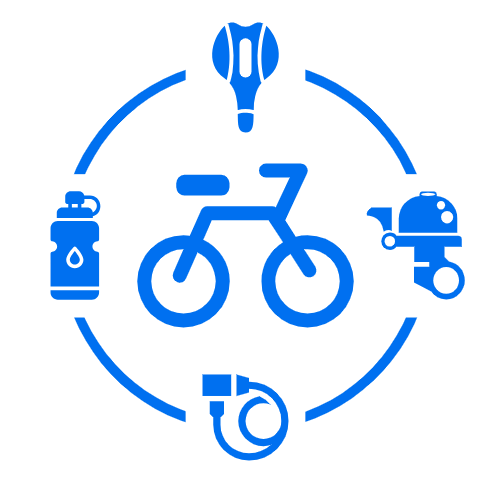Various Ways to Select and Utilize A Cycle Tool Kit
Lectro E-BikesRabani Singh | 15 Nov, 2022

Every cyclist strives for self-sufficiency when riding their e-bikes or performing necessary repairs. Because you won't be able to rely on your friendly neighbourhood mechanic to perform basic repairs while you're out riding, having a well-stocked cycle tool kit is essential.
It's easy to store in your saddle bag or jersey pocket and comes in handy quite frequently. There are numerous multi-toolkits on the market, and the average cyclist is frequently perplexed about which one to purchase and how to use one. Read further to know more.
How Should You Select a Cycle Tool Kit?
Cycle Tool kits come in a variety of sizes and shapes. Some are small and have basic functions,
whereas others can assist with more advanced issues, such as repairing a chain with a chain breaker.
Here Are Four Things To Think About When Selecting a Cycle Tool Kit:
Pricing- Buy what you can afford.
More functions can be your get out of jail card while on long endurance rides depending on which section of your e-bike you want to work on.
Versatility, Quality, and Design- A good toolkit should be compact and designed well. Low-quality toolkits should be avoided as they may poke your spare tyres when stored in the saddle bag. For quick work on your bike, look for a toolkit that has a clear sizing label imprinted on each Allen key.
Transporting the toolkit should be simple.
How Should a Cycle Toolkit Be Used?
You no longer need to consult your friends or spend countless hours researching on the internet. I've made a simple Cycle tool kit functionality points chart for easy and better understanding!
The Type of Cycle Tool Kits and its Function
Allen Key 10mm: Remove or fit Shimano freehub body and Campagnolo crankset maintenance
Allen Key 9mm: Adjustment of the rear derailleur shift key
Crank bolt removal with an Allen Key 8mm
Wedge Nut, Brake Pad Adjustment, Pedal Adjustment, and Seat Clamps: Allen Key 6mm
Allen Wrench Handlebar, Aligning brake, Saddle height, and Gear cable adjustment are all 5 mm. Allen Wrench 4mm: Specific handlebars, bottle holders, mudguards, pannier rack mounting, and cleat adjustment.
Allen Key 3mm: Adjustment of side mirrors, brake levers, and spring tension in Shimano pedals.
Allen Key 2.5mm: Gear shifter and pannier rack height adjustments.
Allen Key 2mm: Shimano shift and brake lever reach adjustment
Read This - The Infinite Benefits of Cycling
A Must-Have Essential Cycle Tool Kit for Cyclists
These tools will allow you to repair your bike if it breaks down so you can continue riding. Without further ado...here are the essentials:
1. A Spare Inner Tube: Punctures are unavoidable in cycling. Potholes, broken glass, or a stray nail can all puncture an inner tube and leave you stranded.
Unless you're extremely unlucky and get two on the same ride, a puncture can usually be repaired by replacing the inner tube. It is frequently difficult to locate a hole in the tube, especially when it is raining outside. You're much better off patching up the inner tube at home.
There are numerous inner tubes to choose from. To determine which one is best for your wheels, you must first determine the size of your tyre and the type of valve.
2. A Puncture Repair Kit: Remember that unfortunate scenario we mentioned earlier? This is where a puncture repair kit comes in handy. Carrying a puncture repair kit with a rubber solution and patches to cover up holes is useful when you've already used your spare inner tube. A puncture repair kit will allow you to get home without having to walk. It won't be as strong as a new tube, but it should suffice if used properly.
3. A Tyre Inflator: There might be cases where there is no one around to help you with an air pump when you have a flat tyre. Be it a tube issue or low tyre pressure, having an inflator with you will help you out of any tricky situation.
Many cyclists prefer to carry a CO2 inflator system as they tend to be lighter in weight and less bulky. These will come in handy in case of a flat tyre or low pressure while on your journey and get you back in the saddle in record time.
4. Food: In addition to the tools you'll need to perform minor repairs while on the road, keep some snacks in your bike tool kit. Cycling requires a lot of energy, which comes from food.
It's a good idea to choose some items that are easy to eat with one hand. Because they don't spoil easily, energy bars, dried fruits, and nuts are excellent choices.
5. A Bag or Saddlebag: In our cycling fantasies, these tools would magically appear when we needed them, perhaps on a rainy day when we were stranded on the side of the road.
Unfortunately, that is not the case, so cyclists should invest in a dependable waterproof bag or saddlebag to safely transport their cycle tool kit. This is the most convenient way to transport all essentials, including money and personal documents, in addition to your cycle tool kit.
How Much Does a Cycle Tool Kit Weigh?
The weight of your cycle tool kit is largely determined by you. The weight will be determined by the tools you choose to bring with you. However, it should not be too heavy because too much extra weight can interfere with your ride. Try to stay under 500g. A good cycle tool kit weighs between 150g and 200g.





